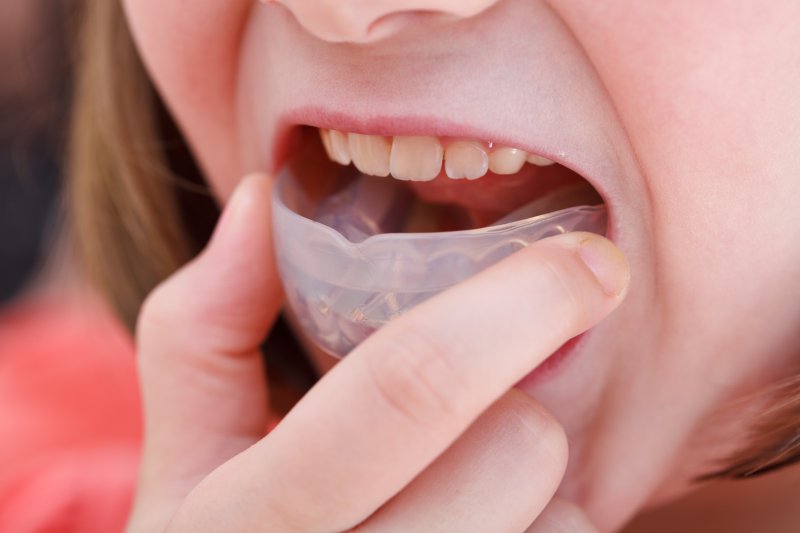
Do you grind your teeth or clench your jaw? You may need to speak with your dentist about receiving treatment for bruxism. According to Sleep Foundation’s website, this common condition affects anywhere from around six to 50% of children, around 15% of teens, 8% of middle-aged adults, and 3% of older adults. Side effects include headaches, tooth or jaw pain, and overly worn teeth. Mouthguards create a barrier between your top and bottom teeth and are commonly used to lessen the effects of this condition. If your dentist gives you a mouthguard to help with bruxism, follow these three tips to ensure that it remains in good condition and you get the most out of it.
Tip #1: Don’t Forget to Wear Your Mouthguard
It’s important to wear your mouthguard every time you fall asleep so that your teeth don’t grind together and cause a host of oral health issues. If you often take naps after school, work, or dinner, you may forget to put your dental guard in before doing so. To prevent this, you may want to consider storing it near the areas where you often fall asleep. This will allow you to quickly put it on before you fall asleep.
Tip #2: Care for Your Dental Guard
Along with wearing your dental guard before you go to sleep, it’s also important to take good care of it. Some tips to help you properly clean your dental guard include:
- Rinse– Use cool, fresh water to wash your mouthguard when you take it off in the morning. Don’t forget to clean its storage case with regular dishwashing detergent every few days as well.
- Brush – Use a soft-bristled toothbrush and either non-abrasive toothpaste or mild, alcohol-free soap to gently clean your dental guard.
- Soak – You can also add a capful of mouthwash to a clean glass. Dilute it with water until there’s enough liquid to cover your mouthguard and then soak it in this mixture for 30 minutes.
- Dry it out – Once you’re done rinsing and brushing, let your dental guard dry on a clean surface before safely storing it in a hard, protective case that allows for air circulation.
- Avoid hot water – Using hot water to clean your dental guard can cause it to become misshapen and should be avoided.
Tip #3: Have Your Mouthguard Examined by Your Dentist
Every six months, schedule a dental checkup and cleaning and bring your dental mouthguard with you so your dentist can examine it. If there are any problems, your dentist can have a new one made for you. They may also be able to have it professionally cleaned so you can leave your appointment with it fresh and bacteria-free.
With these three tips, you’ll be able to get used to wearing a dental guard. By wearing it as often as your dentist recommends and practicing proper care, you’ll be able to prevent discomfort and keep your teeth healthy and strong!
About the Author
Pain and discomfort from bruxism will soon be a thing of the past with a mouthguard from BridgeMill Dental Care. They’re custom-made to perfectly fit your pearly whites and prevent your teeth from grinding against each other so you can enjoy a healthier, pain-free smile. Do you want to learn more about BridgeMill Dental Care’s oral health services or are you interested in making an appointment? If so, visit their website or call their office at (803) 650-3925 to get started today.
